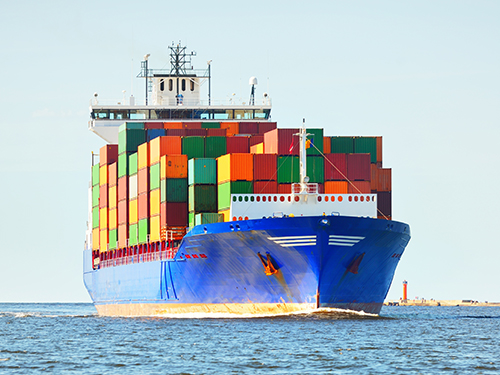A new emissions index has been developed by independent shipping platform SHIPNEXT, in a bid to address widely-held industry concerns about the International Maritime Organization’s (IMO) emissions reduction measures.
According to Alexander Varvarenko, the Belgium-based shipping and tech entrepreneur, cargo is at the heart of the new SHIPNEXT emissions index, which has been designed for vessels carrying breakbulk, dry bulk, heavy and oversized shipments, and in consultation with ship owners.
The SHIPNEXT Voyage Emission Index (SVEI) is based on the individual technical parameters of the vessel, its speed, consumption and intake, whilst also taking into consideration the actual cargo quantity and the intended voyage.
SVEI considers the ship’s fuel consumption at sea to reflect the work of the particular vessel. Fuel consumption in the port is ignored, since such consumption is comparable for most ships and the time of loading and discharging is determined mainly by port technology, not by the technical capabilities of the vessel.
The SHIPNEXT CII (SCII) is proposed as an alternative to the IMO’s own Carbon Intensity Indicator (CII) rating, which seeks to measure the efficiency of a vessel above 5,000 GT. The IMO also intends to give vessels a performance score between A-D, with criteria becoming increasingly stringent by 2030.
Carriers including Maersk have complained that the IMO CII fails to incentivise cargo optimisation, and have instead called for a methodology that rewards more productive vessels. SCII has been designed to do just that.
“The major problem with the existing IMO guidelines is that they do not take into consideration the cargo actually being carried on a voyage,” says Alexander Varvarenko, the CEO and founder of SHIPNEXT. “When you do so, the emissions profile of a given voyage changes completely.”
SHIPNEXT modelling shows how an older, higher emitting ship, if managed properly and laden to full capacity, can prove to be the ‘greener’ solution, when compared to a more modern ship that’s producing more carbon dioxide because it is on a longer voyage.
Adds Varvarenko: “Our approach stimulates owners to manage their vessels more efficiently with fewer ballast runs, while also continuing to follow all the other existing emissions indexes that are imposed on them around vessel construction.
“There has to be logic to how shipping lines are taxed for their emissions. What we are proposing is a fair and reasonable approach during the transition to cleaner shipping, which allows both shippers and carriers to share the costs.”
SCII is now being marketed to SHIPNEXT’s more than 4,500 daily users. To learn more about the methodology behind SHIPNEXT’s emissions calculations, visit https://shipnext.com/news/shipnext-launches-fair-and-transparent-emission-indexes.
Established in 2015 by Alexander Varvarenko, SHIPNEXT offers instant cargo-to-ship matching via a digital platform available on desktop and mobile devices.
Designed for shipbrokers in dry bulk, breakbulk and containerized trades, SHIPNEXT is “Uberizing” the shipping industry by using artificial intelligence for the instant processing of shipping data, emails and messages.
The platform features real-time data management, instant hire freight-matching, messaging, dynamic freight search, real-time market analytics, fleet-search, freight tendering, freight calculation, port data, contract management, CRM and other tools.
Source: Hellenic Shipping News






